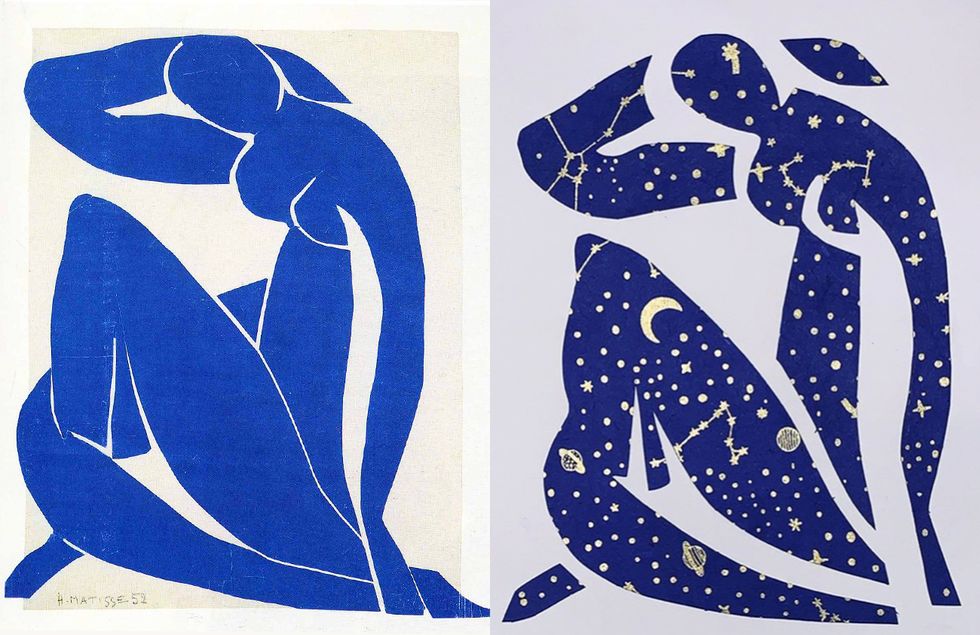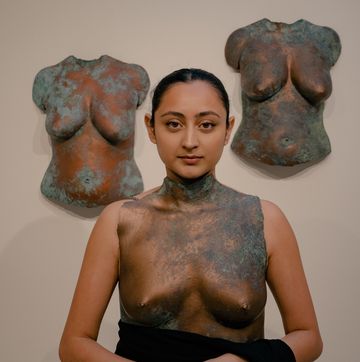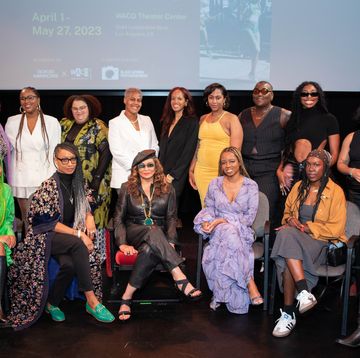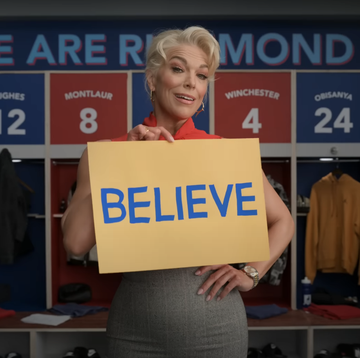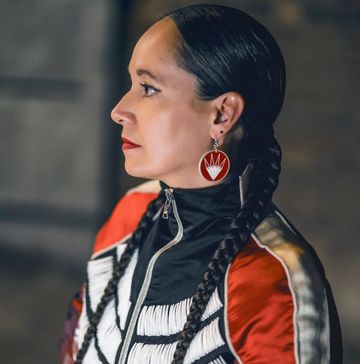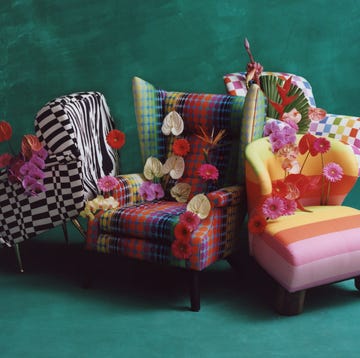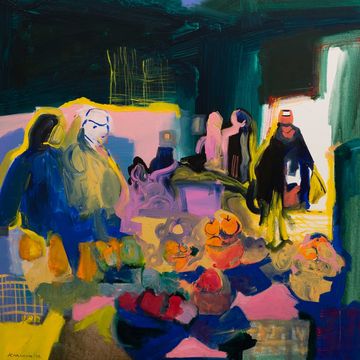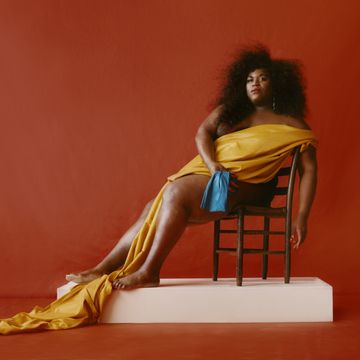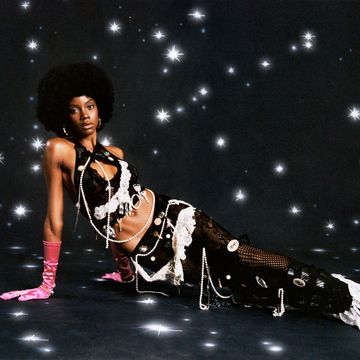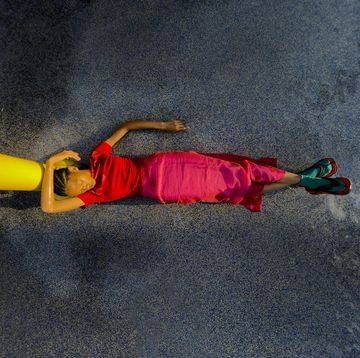Like a certain subset of millennial women who live for messy drama on a 5G connection, I have fallen down the rabbit hole of Caroline Calloway. The trusting, vaguely manic Instagram influencer became temporarily infamous in January for “mason-jar-gate,” a mostly-failed event tour that captured the hearts and minds of the Internet drama-loving public. But it was her lead up to writer Natalie Beach’s viral article about their lapsed friendship in The Cut when I became fully addicted.
Like many of my friends, I've mainlined CarCalCon (my term for Caroline Calloway Content) by scrolling through her relentlessly raw posts until I considered myself to be an expert. And in my expert opinion, there are two kinds of CarCal Content. The first is overshare-y posts that move the reality-TV-style narrative of her life forward, such as her live scavenger hunt for cocaine at Harvard, her newfound veganism, or her decision to spark a friendship with podcasters who once called her “fat.” The second kind of CarCalCon—nearly every other story post—is the sale of her own, mass-produced, knockoff versions of a famous Matisse cut-out, Blue Nude II (1952), recently pegged by The Strategist as “the stylish adult’s dorm room poster.”
Call it postmodernism, plagiarism, or another Calloway scam, but Caroline’s Dreamer Bbs, as she calls them, are selling like hotcakes. According to Caroline, whom I spoke with by phone, she now sells enough pieces to pay for rent in her Manhattan apartment, amounting to “oil wells of money.” (Maybe take that with a grain of salt.)
More From ELLE

Each Dreamer Bb, made with craft supplies and marbled paper, retails between $140-$320 during her “flash sales,” a term which I assume is meant to create a sense of scarcity. Bb, Caroline says, is short for “baby.” She shares the process for each piece with her followers, through timelapse videos shot on her wax-stained carpet with captions like “my happiest place.” Caroline considers all of this to be performance art. Titles are reflective of Caroline’s current mood, such as a recent sale of the piece How Do You Make Peace With The Part Of Yourself That Just Wants To Be Liked? The wild dimensions and jagged edges make me hope that Caroline considers investing in a guillotine paper trimmer. But, maybe she’s not interested in pleasing people like me who enjoy right angles.
Calloway is paying a 22-year old “gallery assistant” named Christina Read to help her ship the art, keep her on task, and respond to DMs, “sort of like a political aid.” The relationship seems fair, although Read posted about applying to jobs in a recent story. Calloway joked, “Or, she’ll write a tell-all in The Cut. Who knows? I’m not making her sign an NDA.”
It’s a real testament to The Way We Live Now that, due in part to an Instagram influencer, a 67-year old Matisse work is having a second go-around in popular culture. Matisse did not have Instagram, 800,000 followers, or “floor salads” when he began transitioning to “painting with scissors” in his late sixties. He had stomach cancer, which limited his painting ability down to advising assistants on how to achieve the perfect cerulean hue. The Blue Nudes I-IV took a “notebook of studies and two weeks of work” for each piece, requiring intense field sketching sessions. Blue Nude II was cut from a single piece of paper creating an effect that is both flat and sculptural, complicated and simple. And they were all Matisse’s idea.
Caroline did not originate the concept for Blue Nude II. She didn’t take a wheelchair out to a sewer grate in Nice to watch hovering seagulls for inspiration. She does, however, geotag her artwork posts to Nice, France from her New York apartment.
When I asked about borrowing from the French artist, Caroline replied, “I f*cking love Matisse. I just lose my shit for him” and “I wanted to create art that fit the Pinterest interior aesthetic, because that is so of the internet age and my platform, my celebrity. I didn’t want to stray from the visual lexicon of interior Re-Pins I wanted it to fit within it.” Caroline says she also chose Blue Nude II, because of its ability to be “mass-produced,” and selling these will make the work (and her) “instantly brandable.”
Calloway is aware that people are scrutinizing this use of Matisse’s work for her own gain. The words “plagiarism,” “ripoff” and “scam” have been used by Calloway’s detractors, to which she replies, “Why not harness this outrage economy to my own benefit?” Calloway believes in her abilities as a paper cut-out artist: “I could have done any shape. I could have done my own nude, I'm good enough, very handy with scissors and, my god, now more than ever, I could write with scissors on a piece of paper,” before exclaiming, “I don’t even have to market it!” Nevermind that Blue Nude II has seen fifty years of marketing through Matisse’s name recognition and exhibitions at institutions like the Museum of Modern Art in New York (2015).
Postmodern art history has set the precedent that “good artists borrow, great artists steal.” Marcel Duchamp’s famous L.H.O.O.Q (1919) featured a mustache drawn onto the Mona Lisa. Salvador Dali’s similar work, Self Portrait As Mona Lisa (1973) used photographs of the original work to make a mashup. Calloway, who is nothing if not extremely self-aware, brought these works up to me, as well as Jeff Koons’ Louis Vuitton collection “Masters LV x Jeff Koons” (2017) that slapped famous works onto the iconic handbags and luggage and works by Damien Hirst. “Dreamer Bbs is still a greater variation [from Blue Nude II] than I would say Duchamp drawing two lines on the Mona Lisa...I am more respectful of the parasocial relationship of myself and my fans than anything Damien Hirst does between himself and his collectors.”
Unlike Dali and Duchamp, however, I have yet to see Caroline give the original artist, Matisse, so much as a shoutout (sites like Etsy and BuyArtForLess do). She hasn’t written any longform about Matisse on her feed, and none of her titles reference Matisse or the original title like Dali’s did. The optimist in me hopes her followers are aware that the Dreamer Bbs are a reference to existing intellectual property, but my inner cynic isn’t so sure.
Referencing Andy Warhol, Caroline remarked, “If I really wanted people to catch onto the performativity I could be a complete asshole and you know, sign my name on a dollar bill and sell that for a hundred and forty dollars.” For reference, Warhol’s iconic print, 200 One-Dollar Bills fetched $43.8 million in 2009. I asked her if she’d consider it and she exclaimed, “No! I think that’s mean.” Caroline told me that on average, she sells seven or eight Dreamer Bbs a day. Though every day isn’t a sale day, a conservative estimate is about $1140 in profits per day.
“Tell her to raise her prices,” an art critic referred to me by Los Angeles’ Kohn Gallery said. Wishing not to be named, he also remarked that the Dreamer Bbs have “no critical value, but that’s true of lots of art,” and that any artist selling those prints for “less than $1000+” would look “naive.” Calloway told me that she could be “charging $20,000” per single sponsored post, but chooses to sell the Bbs to give her fans a chance to pay for the “quantifiable value of our parasocial relationship.” When I asked if Dreamer Bbs are “plagiarism,” the critic disagreed: “The whole thing is kind of Duchampian I suppose. There’s no need for her to credit Matisse in my opinion.”
“I respect the online hustle,” says Etsy and Instagram artist Cait Raft, who charges $150 for a commissioned piece. “That being said, mine take hours to make and are original watercolors." Raft did mention that her own obsession with CarCalCon recently led to a watercolor portrait of the influencer wearing a crown of macarons. “I think she’s making Matisse art for the people. I own a knock-off Louis Vuitton bag so I’m not on any high horse.”
Calloway has neatly averted many of the professional struggles of being a young artist. She doesn’t need to get into watermarking and signature battles on the platform, because the work was already someone else’s. She doesn’t face art censorship on the app, resulting in deletion, even though she’s technically posting nudes. Calloway doesn’t have to pay gallery owners a 50% commission - standard for most artists - because her gallery is inside her Instagram story. And, she doesn’t have to work a side job, or multiple side jobs like so many artists do. (The conversation around Calloway’s privilege is not forgotten in this moment.)
Calloway has double the followers of Jeff Koons and 200,000 more than Damien Hirst. She laps institutions in the hundreds of thousands of followers like The New Museum and LACMA. And, other famous millennial artists such as Amalia Ullman, who premiered an Instagram-oriented exhibit at The New Museum in 2017, lack the followers, rapid fire posting ability and viral fame. Also absent in her betters is the “outrage economy” Caroline created by being “canceled” multiple times in 2019. Nobody is making hundred-tweet threads or Reddit posts decrying Koons a scammer these days. And, although Caroline told me she wants to do a gallery exhibit, none of the prominent galleries I reached out to seemed willing to even discuss Calloway or her artwork.
Buying a piece of CarCalCon is like purchasing a piece of internet history. It’s reminiscent of people who shop for used props and costumes on sites like ScreenBid from bygone films and television shows. Or maybe it’s more like slowly watching Vincent Van Gogh sever off his own ear online with 800,000 of my closest friends. Maybe that’s too harsh. But there’s something undeniably addicting about watching a woman I don’t know post through the very real emotional pain she seems to be enduring, all while selling her version of a male artist’s version of an ideal woman’s body.
In our closing call, Calloway urged me to “seriously write whatever you want. What’s the worst you can do, call me a scammer? Oh wait. People already have, I’ll survive.”
Georges Matisse, Henri’s great-grandson who manages the Estate of Henri Matisse, declined to comment for this story.

Claire Downs is a freelance writer based in Los Angeles. Her work has appeared in Cosmopolitan, Vice, The Daily Dot and other outlets.

